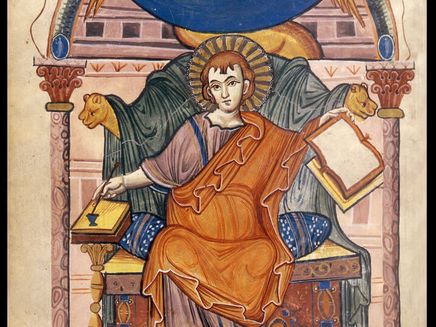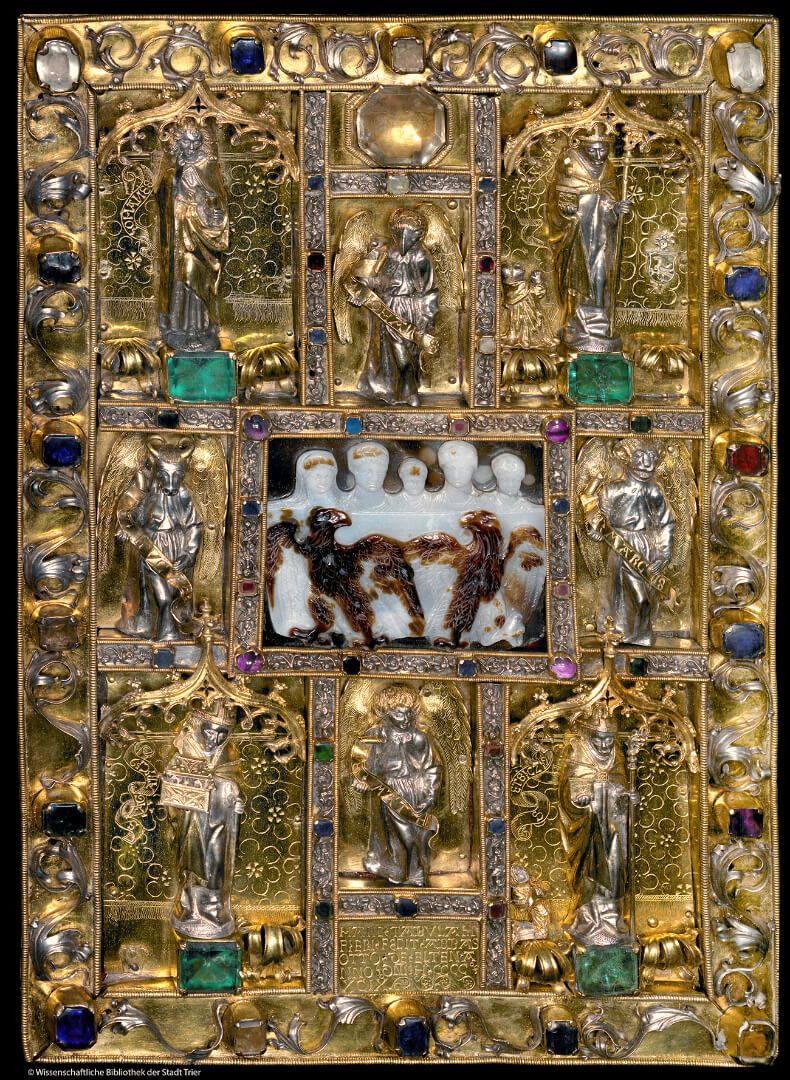The Ada manuscript made its way to the Trier abbey St. Maximin presumably as a donation of the imperial house. The rich Benedictine monastery had already received many gifts and had not only been favoured by the Carolingians, but also by Merovingian rulers.
If you are travelling along the Mosel, you will often find historical buildings with the designation “Maximiner Hof”. These were all properties owned by the rich Trier abbey!
The origins of St. Maximin go back to early Christian times: The Romans buried their deceased in front of the gates of the city, including important Christians. There was a burial ground in front of the Porta Nigra where a tomb was constructed in the mid 4th century for the first Trier bishops Agritius, Maximin and Paulinus. This later became a church and then later on the monastery St. Maximin nearby, named after Maximin, the second Trier bishop.
The tomb is long gone, but walls of the former abbey church of St. Maximin are still resting on early Christian stone sarcophagi. You can visit this exceptional excavation site on a guided tour.
Otherwise very little is left of the once very impressive monastery complex. The remains of the bishop Paulinus rest in the nearby Baroque church of St. Paulin, which was constructed according to the plans of the famous architect Balthasar Neumann and is truly impressive. You've got to see it!
According to legend, the St. Maximin abbey was founded thanks to a donation by St. Helena, the mother of the Roman Emperor Constantine. The tomb of his father, Constantius Chlorus, is also said to have been located in the burial ground in front of the Porta Nigra.
The precious gilded book cover of the Ada Gospels is adorned by a late antiquity cameo – a cut stone -, which shows Emperor Constantine and his mother Helena along with his family. This symbolises Charlemagne's claim to power as the “new Constantine” on the one hand, while on the other it recalls the founding legend of the mighty St. Maximin abbey. Even if the book cover was refaced in 1499, the stone very likely comes from the original time when the gospel book was created.




